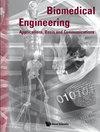使用机器学习方法设计和实现用于听力分类的便携式自动听力计
IF 0.6
Q4 ENGINEERING, BIOMEDICAL
Biomedical Engineering: Applications, Basis and Communications
Pub Date : 2022-06-13
DOI:10.4015/s1016237222500351
引用次数: 1
摘要
听力测试可以使用听力图识别特定频率的听力损失。该研究的目的是:(i)开发一种自动听力计,用于自我诊断患者的听力能力;(ii)从声学信号中提取特征,并使用不同的机器学习算法对正常和重度听力损失患者进行分类;(iii)验证基于简单线性回归分析和机器学习算法的六频平均(6-FA)听力损失分类方法。该研究在150名患者中进行,其中75名听力正常的患者和75名重度听力损失的患者。在隔音听力学室和正常野外环境中对150人进行了听力学测试。根据患者的反应,自动改变强度和频率,并利用人工神经网络学习程序的原理绘制听力图。使用支持向量机(SVM)、k-近邻分类器和Naïve贝叶斯分类器对正常听力损失患者和重度听力损失患者进行分类的总体准确率分别为97%、96%和95%。结果表明,支持向量机分类器优于其他两种分类器。初步的听力测试可以远程进行,然后咨询听力学家。因此,患者可以独立操作开发的原型,并获得训练有素的医务人员的咨询。本文章由计算机程序翻译,如有差异,请以英文原文为准。
DESIGN AND IMPLEMENTATION OF A PORTABLE AUTOMATED AUDIOMETER FOR HEARING CLASSIFICATION USING MACHINE LEARNING APPROACHES
Audiometric tests can identify the hearing loss at specific frequencies using the audiogram. The aim and objectives of the study were (i) to develop an automated audiometer for self-diagnosing the hearing ability of the patient; (ii) to extract the features from the acoustic signals and to classify the normal and profound hearing loss patients using different machine learning algorithms; (iii) to validate the hearing loss classification using six-frequency average (6-FA) method based on simple linear regression analysis and machine learning algorithms. The study is conducted among 150 patients, including 75 patients with normal hearing ability and 75 patients with profound hearing loss. The total population of 150 underwent audiometric test both in the soundproof audiometric room and in the normal field environment. Based on the patient response, the intensity and frequency are changed automatically, and the audiogram is plotted by the principle of Artificial Neural Network learning procedures. The overall accuracy produced by classification of normal and profound hearing loss patients using Support Vector Machine (SVM), k-Nearest Neighbor classifier, and Naïve Bayes classifier is 97%, 96%, and 95%, respectively. The results indicated that the SVM classifier outperforms the other two classifiers well. The preliminary audiometric test can be performed remotely and then consulted with an audiologist. Thus, the patient could operate the developed prototype independently and get a consultation from trained medical personnel.
求助全文
通过发布文献求助,成功后即可免费获取论文全文。
去求助
来源期刊

Biomedical Engineering: Applications, Basis and Communications
Biochemistry, Genetics and Molecular Biology-Biophysics
CiteScore
1.50
自引率
11.10%
发文量
36
审稿时长
4 months
期刊介绍:
Biomedical Engineering: Applications, Basis and Communications is an international, interdisciplinary journal aiming at publishing up-to-date contributions on original clinical and basic research in the biomedical engineering. Research of biomedical engineering has grown tremendously in the past few decades. Meanwhile, several outstanding journals in the field have emerged, with different emphases and objectives. We hope this journal will serve as a new forum for both scientists and clinicians to share their ideas and the results of their studies.
Biomedical Engineering: Applications, Basis and Communications explores all facets of biomedical engineering, with emphasis on both the clinical and scientific aspects of the study. It covers the fields of bioelectronics, biomaterials, biomechanics, bioinformatics, nano-biological sciences and clinical engineering. The journal fulfils this aim by publishing regular research / clinical articles, short communications, technical notes and review papers. Papers from both basic research and clinical investigations will be considered.
 求助内容:
求助内容: 应助结果提醒方式:
应助结果提醒方式:


